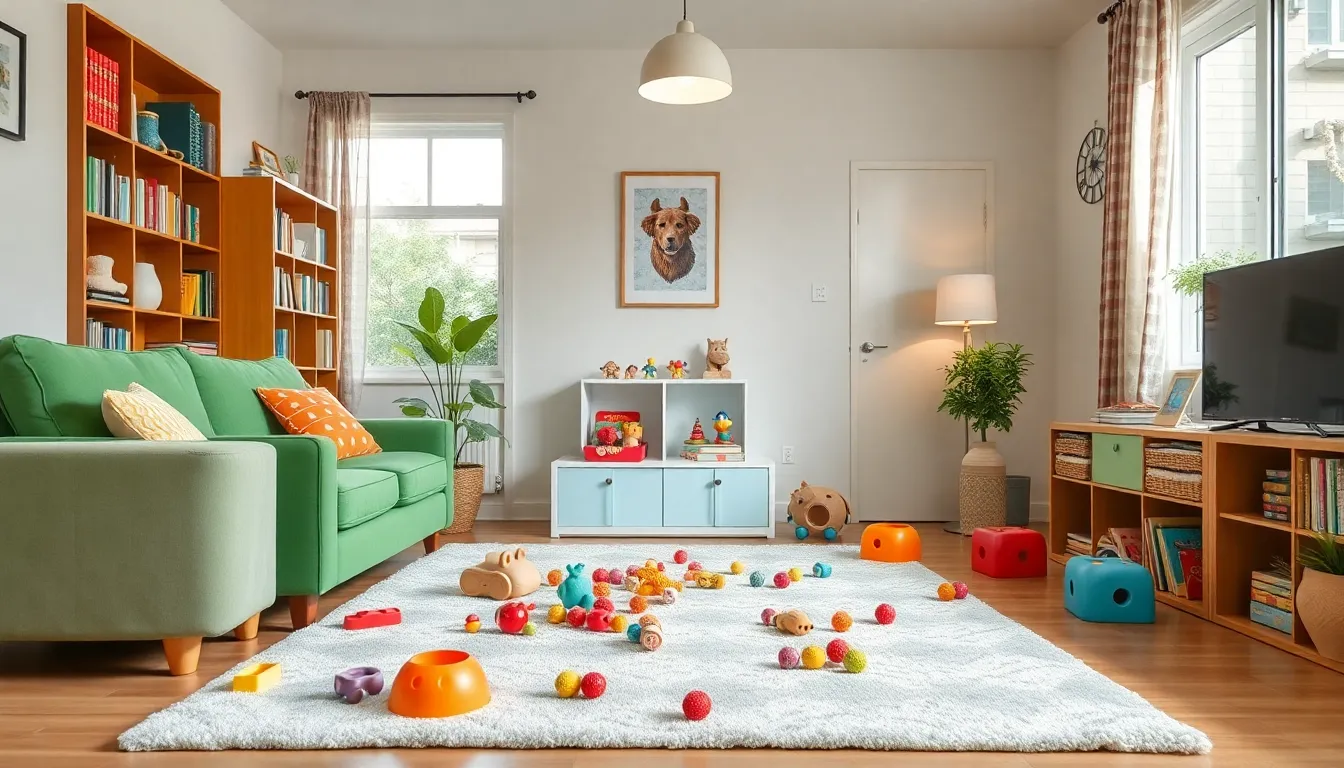Table of Contents
ToggleCreating a child-proof home isn’t just a trend; it’s a necessity for parents and caregivers. With curious little explorers on the move, ensuring their safety becomes a top priority. From sharp corners to hazardous substances, everyday items can pose risks that many might overlook.
Transforming a living space into a safe haven involves more than just buying a few safety gadgets. It requires a thoughtful approach to the layout, furnishings, and even the small details that make a house a home. By understanding potential dangers and implementing effective solutions, caregivers can foster an environment where children can thrive while minimizing risks.
Importance Of A Child-Proof Home
Creating a child-proof home ensures a safe environment for children. Safety measures significantly reduce the risk of accidents, enabling children to explore their surroundings without constant supervision. Caregivers can safeguard children from potential hazards by identifying and mitigating dangers present in everyday items.
Consider the following aspects of a child-proof home:
- Sharp Objects: Knives, scissors, and tools should remain out of reach. Storing these items in locked cabinets prevents access.
- Hazardous Substances: Cleaning supplies and medications must stay in high cabinets or locked containers. This reduces the likelihood of accidental ingestion.
- Furniture Stability: Heavy furniture should secure to walls. Ensuring stability prevents tipping, which can lead to injury.
- Electrical Safety: Outlet covers should protect electrical sockets. Utilizing cord organizers keeps wires neat and reduces tripping hazards.
- Stair Safety: Installing baby gates at the top and bottom of stairs prevents falls. Ensuring these gates remain securely fastened is essential for safety.
An unsafe environment can lead to serious injuries, emphasizing the importance of proactive safety measures. By prioritizing a child-proof home, caregivers foster peace of mind while promoting children’s independence and curiosity.
Key Areas To Focus On

Child-proofing a home requires attention to key areas that pose significant risks to children. Implementing safety measures in these spaces reduces the likelihood of accidents and enhances a child’s ability to explore safely.
Living Room Safety
Living rooms often contain items that can cause harm if not secured. Furniture with sharp edges should be padded, and heavy items must be anchored to walls to prevent tipping. Remove choking hazards, such as small decorative items, and keep cords from blinds and electronics out of reach. Utilize corner guards for tables to protect against injuries.
Kitchen Precautions
Kitchens present numerous potential dangers. Store knives, scissors, and other sharp utensils in high drawers or locked cabinets. Use childproof locks on lower cabinets to secure cleaning products and under-sink chemicals. Install stove knob covers to prevent accidental activation and invest in safety latches for the refrigerator to deter curious hands. Always supervise children when cooking or near food preparation areas.
Bathroom Considerations
Bathrooms require special attention due to slippery surfaces and hazardous products. Use non-slip mats in tubs and showers to reduce slipping hazards. Store medications, toiletries, and cleaning supplies in high, locked cabinets. Install toilet locks to prevent drowning risks and ensure that faucets have temperature controls to prevent burns. Always supervise bath time closely.
Bedroom and Play Areas
Bedrooms and play areas should inspire creativity while maintaining safety. Use heavy furniture anchoring to prevent tip-overs and avoid excess clutter that could lead to trips and falls. Keep toys organized and age-appropriate to minimize choking risks. Consider using safety gates to restrict access to stairs and ensure that windows have locks or safety devices to keep children secure.
Essential Child-Proofing Products
Child-proofing a home involves various effective products that enhance safety for children. These essential items address specific risks throughout the living space.
Safety Gates
Safety gates serve to restrict access to dangerous areas, such as stairways or kitchens. They should be placed at the top and bottom of stairs to prevent falls. Adjustable gates fit various doorways and openings, allowing flexibility in design. Choose gates that meet safety standards, featuring sturdy materials and secure locking mechanisms. They provide physical barriers while allowing caregivers to supervise children easily.
Outlet Covers
Outlet covers protect curious little fingers from electrical hazards. These simple devices plug into standard outlets, preventing access to live electrical components. Child-proof options include sliding covers that require adult manipulation to open, ensuring enhanced safety. Installing outlet covers in every room where children play helps reduce the risk of electrical shocks and keeps children safer during active exploration.
Corner Guards
Corner guards minimize injuries from sharp furniture edges. Made from soft materials, these guards attach to coffee tables, countertops, and desks, creating a safe buffer. They come in various shapes and sizes to fit specific furniture pieces and can blend with home decor. Installing corner guards in play areas and common spaces significantly lowers the risk of cuts or bruises during playtime, allowing for a safer environment.
Strategies For Effective Child-Proofing
Implementing robust child-proofing strategies involves proactive measures and ongoing maintenance. Regular assessments of the home can significantly enhance safety for children.
Regular Safety Checks
Regular safety checks enable caregivers to identify and address potential hazards quickly. Schedule comprehensive inspections every month to ensure safety measures remain effective. During these checks, examine furniture stability, inspect baby gates for functionality, and verify that safety locks are operational.
Focus on the following areas:
- Furniture: Ensure heavy furniture remains anchored and check for sharp edges that may have become exposed.
- Hazardous Items: Reassess the placement of cleaning supplies, medications, and sharp objects, making adjustments as necessary.
- Flooring: Inspect for tripping hazards such as loose rugs or toys and ensure the floor remains clutter-free.
Conducting these regular checks ensures ongoing compliance with safety standards and fosters a more secure environment for exploration.
Involving Children In Safety
Involving children in safety discussions promotes awareness and fosters responsibility. Educate children about risks and safe behaviors related to their environment. Use simple language to explain potential dangers and the importance of following rules.
Encourage children to:
- Identify Hazards: Teach them to recognize potentially dangerous objects and areas, such as sharp tools or stairs.
- Practice Safety Rules: Implement guidelines for safe play, including not climbing on furniture or running indoors.
- Participate In Safety Assessments: Engage older children in periodic home safety checks, encouraging them to report hazards they discover.
Fostering a culture of safety empowers children to make informed decisions and reinforces the importance of their well-being in the home environment.
Creating a child-proof home is an essential step for any caregiver. By recognizing potential hazards and implementing effective safety measures, it’s possible to foster a secure environment that encourages exploration and growth. Proactive strategies such as regular safety checks and involving children in discussions about safety not only protect little ones but also instill a sense of responsibility.
Investing time and effort into child-proofing transforms living spaces into safe havens where children can thrive. With the right precautions in place, caregivers can enjoy peace of mind while children navigate their world with curiosity and confidence.







